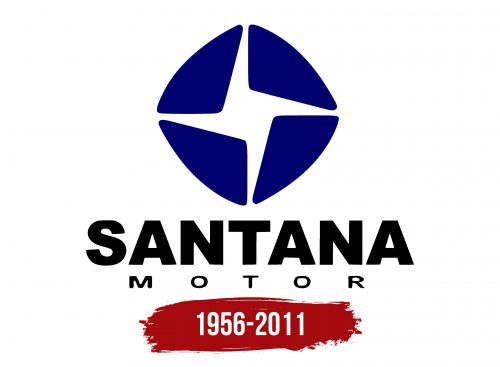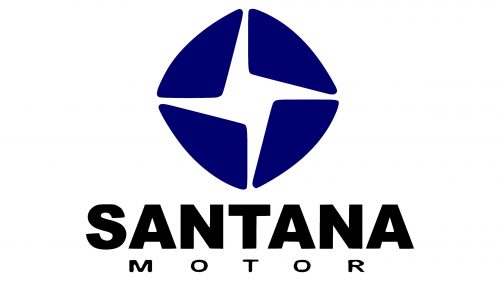The Santana Motor logo symbolizes progress and ambition in the automotive industry. It conveys dynamism and energy, highlighting the brand’s active development. The emblem also reflects the company’s long-standing traditions, showcasing its authority in the global market.
Santana Motor: Brand overview
In the Spanish province of Jaén, the city of Linares is where Santana Motor’s history began in 1956. Metalúrgica de Santa Ana, S.A. was established to manufacture agricultural machinery. At this time, the government was promoting industrial development, and the Spanish economy was beginning to recover from the civil war.
The British carmaker Rover and the firm inked a deal in 1958 for the licensed production of Land Rover automobiles in Spain. With this arrangement, the company began its journey into the vehicle manufacturing industry, marking a significant turning point in its history. In 1959, the first Land Rover built at the Linares facility came off the assembly line.
The firm saw significant growth and expansion during the 1960s. It steadily increased locally produced production while manufacturing Land Rovers for the Spanish market and export. Around this period, the company became a major employer in the area and substantially contributed to Andalusia’s industrialization.
The company started creating Land Rover modifications in the 1970s, specifically for the Spanish and other Southern European markets. The Santana 1300, which had a more potent engine and better comfort than the regular Land Rover, was one of the most popular models.
An important turning point in the company’s history occurred in 1983. The Santana 2500 SUV debuted the company’s first entirely independent development. Despite being built on the Land Rover platform, this car featured a unique design and several technological improvements. The introduction of this methodology assisted the business in fortifying its brand and growing its market share.
Following the termination of its cooperation with Land Rover in 1985, the company concentrated solely on manufacturing its models. Around this time, it started working with Suzuki, a Japanese carmaker, to produce several Suzuki models for the European market.
The company had difficulties during the 1990s. It had to deal with growing financial challenges and competition in the SUV industry. Despite this, the company kept creating new models—the Santana 350, for example, was unveiled in 1998.
Iveco, an Italian firm, purchased a majority share in the company in 2001. Although this transaction raised expectations for the company’s rebirth, the collaboration did not last long. Iveco lost its ownership of the company in 2005.
The last attempt to bring the brand back was in 2006. The company unveiled the PS-10, a cutting-edge SUV designed to rival premium global manufacturers. However, despite its creative design and strong technical features, the PS-10 could not attract enough customers.
The business continued encountering financial problems and filed for bankruptcy in 2011. The Andalusian government made fruitless attempts to locate investors to rescue the enterprise.
The company’s more than 50 years of existence ended in 2012 when production at the Linares plant was permanently stopped.
Although the company is no longer in business, its legacy endures. Collectors greatly value its automobiles, especially the early models made under the Land Rover license. The corporation also greatly influenced Andalusia’s economic growth and the history of the Spanish auto industry.
Meaning and History
What is Santana Motor?
It is a Spanish automaker specializing in producing SUVs and off-road vehicles. The company is known for its rugged and versatile vehicles designed for demanding environments and driving conditions. The models are based on classic SUVs such as the Land Rover Defender and are designed for heavy use in agriculture, industry, and recreation. The brand is very popular with off-road enthusiasts and professionals who need reliable and capable vehicles for work or recreation. Despite its relatively small scale compared to major automakers, the company has earned a reputation for producing high-quality, durable vehicles that can easily overcome the harshest conditions.
1956 – 2011
The “SANTANA MOTOR” logo appeared no earlier than 1991. Before this, the company was known as Metalurgica de Santa Ana (since 1956) and Land Rover Santana (since 1981). Its new name forms the basis of a two-level wordmark, with each part having its distinct appearance:
- “SANTANA” uses a balanced font with large, bold glyphs.
- “MOTOR” features small, flattened letters separated by wide spaces.
The combination of these two different styles makes the logo unique, attracting attention with its contrast and mismatch. However, they share a unifying factor – a common geometric design characterized by even strokes, sharp angles, and the absence of serifs. The restrained form of the glyphs, combined with uppercase letters, creates a sense of strength, seriousness, and professionalism, positioning the company as a responsible car manufacturer. The black-and-white color scheme of the inscription also evokes a businesslike approach.
The wordmark is complemented by a graphic symbol with two parts: visible and invisible.
- The visible elements are four blue triangles with rounded corners arranged in a diamond shape. They create a sense of balance and resemble a wheel, albeit imperfectly, alluding to the automotive industry.
- The invisible element is a white four-pointed star depicted in the negative space between the triangles. It symbolizes determination and moving in the right direction, as a guiding star helps to chart routes.
The emblem looks like a portal leading to Santana Motor’s universe—a world of advanced technology and innovation. The dark blue color of the partially open panels is associated with qualities such as professionalism, reliability, stability, and trust.





